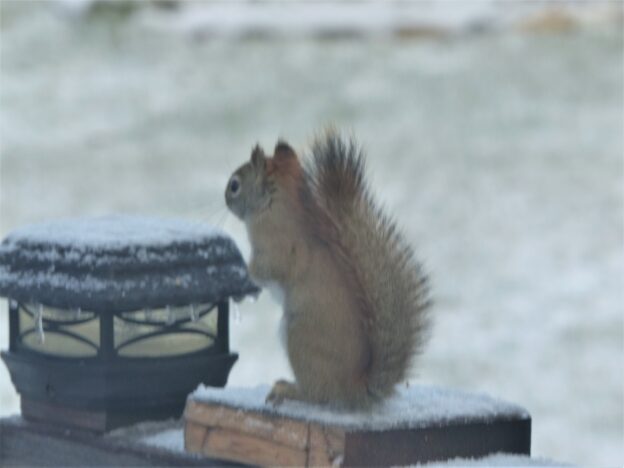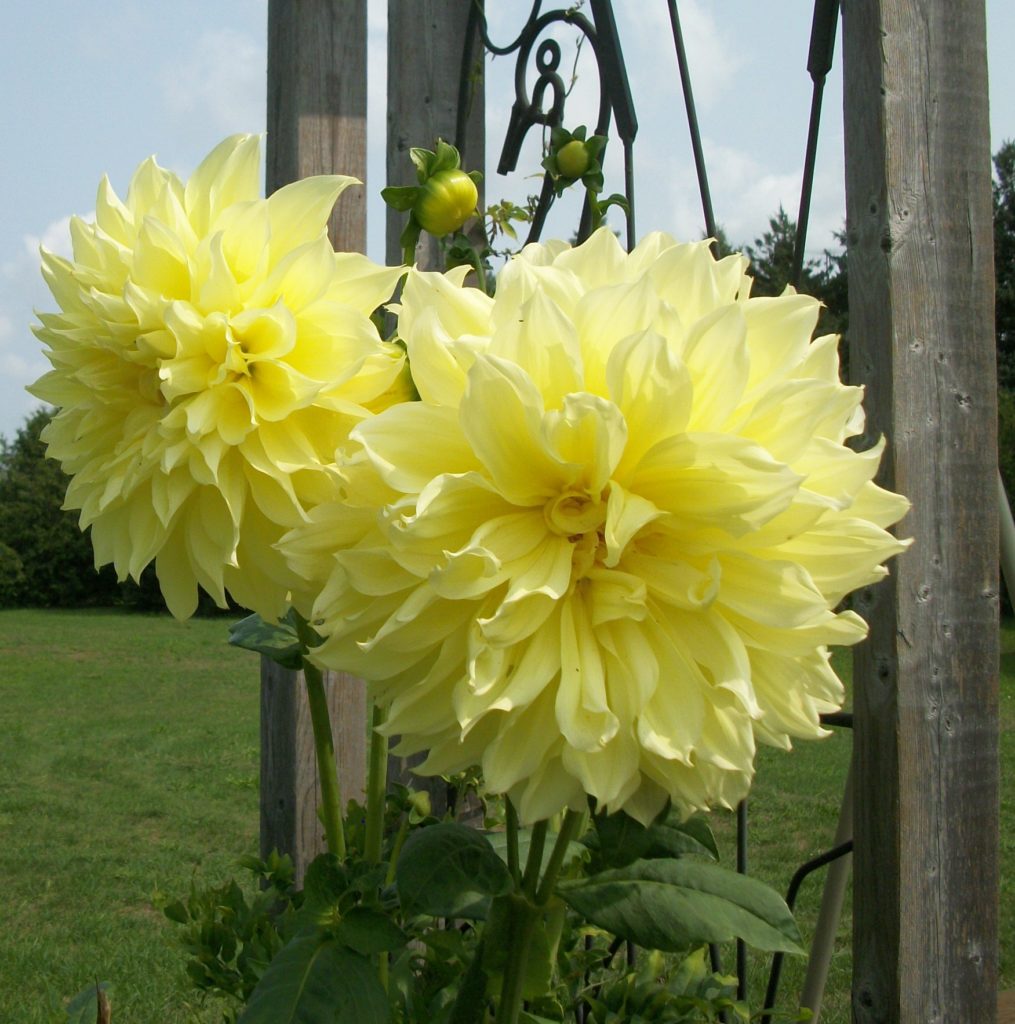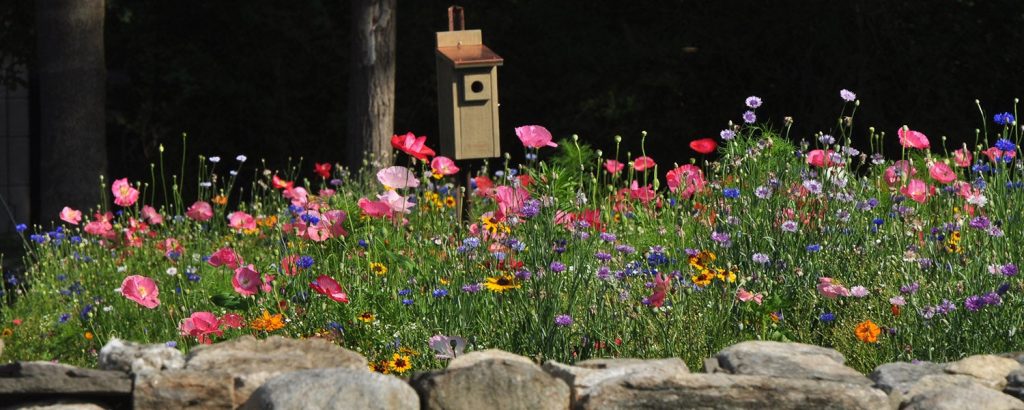January 2023
Squirrels in the Garden
Angela Lassam
Squirrels like all the other animals seen in our garden can be considered a ‘friend’ in Winter or a gardeners’ nightmare. In conservation areas and woodland they are a vital element in the health of the undergrowth.
They are the friendly creatures many people feed on their decks in Winter. They will become daily visitors and can be an amusement but beware they will also try to continue in other times of the year. Corn cobs left in the field by the harvester will be collected by squirrels and you can watch them carry a whole cob as big as themselves for storage – an amusing site!
The squirrel is a member of the rodent family. The most common one is called the Eastern Gray Squirrel and is native to Eastern Canada. Its color can vary from almost black, grey and even streaked with brown. The other squirrel you see is the Red Squirrel, smaller and more rounded. Both have bushy tails that reach over their whole body. They build nests high in the forks of trees called dreys, which are lined with small branches, leaves and moss. In severe winter cold they will use any old nest to keep warm, even as many as 3 or 4 squirrels together. In Spring squirrels may get into attics to nest where they can be a hazard chewing electrical wiring. They produce 2 litters of 4-8 twice a year, Spring and early Summer. Only 40% survive as hawks and owls are their main predators. They were thought to be herbivores but proven to be omnivore as well as eating any fruit and vegetables squirrels get their minerals from bones and dead vermin.
Squirrels become the gardeners’ pest when they bury their cache of nuts in the garden and lawns. Walnuts are a favorite and will lay dormant in the ground for years. They can store 1000s in one season. It may be squirrels eating your young vegetables and fruit in the garden. Squirrels are constant visitors to bird feeders and there are numerous purchases at the bird food companies to deter them. The newest one on the market has a battery operated turnstyle that switches on when a squirrel gets to the food. The squirrel goes for a very quick ride and falls off. An amusing sight but also expensive and unproven.
An alternative possible solution is to set a tray of food on the perimeter of your garden leading them away from your social space.
YouTube has many interesting ideas how to stop squirrels eat at your bird feeders. There is a cheap setup suggested www.youtube.com/watch?v=J9tn_uVbxPI using a PVC pipe with a cap fixed on the pole below the feeder. It must be at least 4ft off the ground – the distance a squirrel will jump. PVC pipe is very slippery and a squirrel cannot grip it. Any large cup shape can be a baffle but must be smooth. Greasing a feeder pole can work but must be applied daily.
I personally find a slinky fixed under the feeder works well and you can find them in Canadian Tire.
Squirrels are just a small part of our world and like many of our wildlife are a nuisance in our yards but remember if you think hard enough squirrels have a place in the whole picture even if they only provide exercise for our pets.
The next monthly meeting for the Tillsonburg Horticultural Society will be on Tuesday February 7th @ 6.30pm (NOTE THE DIFFERENT TIME) in the Seniors Centre Tillsonburg Community Centre. SEED EXCHANGE @ 6.30 pm, meeting starts 7.30 pm, speaker Andrew Fleet of Growing Chefs, Ontario with the future of food and family relationships. Social time and refreshments to follow.
All welcome; guest $4 or membership $20 annually so come join us. More info on Facebook Tillsonburghorticultural and www.Tillsonburg horticultural.ca.

































